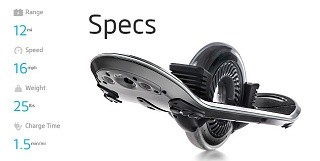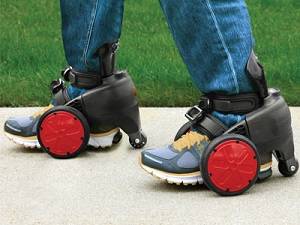Hoverboard UK Law
Table of Contents
The Crown Prosecution Service (CPS) and the Metropolitan police already confirmed it. Using a self balancing mini scooter ‘hoverboard’ is illegal on the road as well as on a public pavement or path in Britain.
The warning from the police is bad news for people who enjoy gliding along the street on their stylish ‘Back to the Future’ style Marty McFly.
But here’s the kicker:
UK legalities on hoverboards imply that it’s dangerous and unsafe to ride this type of wheeled vehicle in a public place.
Thus, the guidance created by existing legislation makes it clear. The latest version of the infamous Segway (or any other personal transportation devices) is only legal when used on private property.
Note: Using a hoverboard or Segway on private land is illegal unless you have the landowner’s permission and members of the public do not have ‘normal’ access to it.
What is a Hoverboard and How does it Work?
In simple terms, a hoverboard is a motor-powered personal transportation vehicle. Most devices consist of a base platform with two articulated foot pads that connect to two motorized wheels.
The rider controls its speed using weight distribution to influence the action of gyroscopes fitted inside the machine.
Hence, leaning forward will make it go faster. Whereas, leaning backwards slows things down as it will activate the brake. Twisting the pads on modern versions will help to steer it in the intended direction of travel.
The best part?
The first self balancing board became popular in 2015. Nowadays, you can buy hoverboards equipped with blue under-lights, Bluetooth, and music players.
Other variations available include self-balancing electric roller skates and new model designs offer a single wheel transporter.
What is a Segway Vehicle?
Segways have design similarities to hoverboards. It is also a two-wheeled motorized personal vehicle with a foot platform mounted above its axle. Riders use weight distribution to control the device.
But, the primary difference between a hoverboard and the Segway is the upright post that it contains with a handle mechanism fitted on top of it.
Note: The rules for electric powered transporters (e.g. e-scooters, Go-peds, and powered unicycles) are used to enforce the hoverboard ban and its prohibition from public roads and pavements in the United Kingdom.
Note: Don’t miss the main section containing more popular news articles about sports and games making front page headlines.
Hoverboard Law UK: Self-balancing Scooters
Self-balancing scooters (hoverboards) are low-powered electronic transportation vehicles. That fact alone, makes them illegal to ride on the pavement under a section of the 1835 Highway Act (details below).
Scottish law also makes it illegal to ride this type of vehicle on the pavement. In this particular instance, it is the Roads (Scotland) Act 1984 that provides the governance on hoverboard laws.
It gets worse:
The legal definition of a self balancing scooter means it fails to meet all the registration requirements for road-legal vehicles in Britain or Europe.
Therefore, full compliance in these schemes (e.g. insurance, tax, and MOT) would be necessary to make them legal for riding on the road.
Nevertheless, the hoverboard fad drifts from strength to strength, and especially so in countries outside of the United Kingdom.
The flying devices have also proven to be a popular craze among football stars and rap celebrities.
Interesting Fact: One hoverboard video went viral of a man performing the tawaf on his machine while he was on a pilgrimage to Mecca.
 CPS Reiterates the Law on Hoverboards
CPS Reiterates the Law on Hoverboards
The Crown Prosecution Service again reiterated the law which refers to the use of ‘personal transporters‘ on the pavement. The road laws apply to self-balancing mini scooters, hoverboards, and Segways.
They are illegal to use in such cases and completely banned from deployment on a public footpath in the United Kingdom.
Department for Transport
The Department for Transport (DfT) also views hoverboards as motorised vehicles. That is another reason why you cannot use hoverboards on pavements.
Important: Their stance on the issue reminded us that a man from Barnsley got fined £75 for riding his Segway illegally on the pavement. It came as a result in one of the hoverboard test cases in 2011.
England and Wales Highways Act 1835
In fact, the hoverboard ban from pavements in England and Wales falls under section 72 of the ‘Highway Act 1835‘. In short, the law states that:
“People cannot use the footway to ‘lead or drive any ass, horse, sheep, mule, swine, or cattle, or carriage of any description’.”
Therefore, to make a vehicle road-legal it must meet certain conditions related to its construction and its safety features. Typical examples include lights, indicators, and a horn.
Segway UK Law 2021
Under the law, the European Union (EU) and Department for Transport (DfT) reaffirms that hoverboards and Segways do not ‘currently’ meet European Community Whole Vehicle Type Approval (ECWVTA).
Segway Electric Roller Skates to face ‘Hoverboard Ban’
 Segway Ninebot is a personal transportation company producing self-balancing electric roller skates. The new skates have a top speed of 12 km/h (7.5mph).
Segway Ninebot is a personal transportation company producing self-balancing electric roller skates. The new skates have a top speed of 12 km/h (7.5mph).
But, in the UK, it seems they will also be outlawed from public pavements and roads in the same way as hoverboards.
So, under the Highways Act of 1835, they are also classed as ‘carriages’ and thus, banned from use on walkways.
The rules were set out by the Department for Transport. The DfT said the electric skates will fall under the same rules as powered rideables (e.g. electric unicycles and mini scooters).
As a rule, all types of electric transporters are not allowed on public roads in the United Kingdom. This type of construction does not comply with standard vehicle construction rules or type approval.
It means they have limited use to private property – with the permission of the landowner. In fact, the same hoverboard rules apply to one and two-wheeled versions, e-scooters, and motorised unicycles.
The company released the Drift W1 electric skates in June 2018, described as ‘a new and trendy way to move around’.
But, you should prepare to pay out a little over £300 if you plan on buying electric roller skates in the United Kingdom.
Note: The company stated their response on its website. They said “the rules and regulations for riding Segway products on public roads differ for every country. Speak to a legal advisor for further clarity.”
The Police Respond to Hoverboard Questions
We have a section offering quick and simple answers when people ask the police questions about a range of popular topics.
The police FAQ help guide lists the most common questions the public asked about law enforcement in the United Kingdom.
Here are some typical examples:
Can My Child Use their Toy on the Pavement?
In fact, the full question sent to the police by email was “Can my child use their electric scooter/bike, quad, go-ped, mini-moto, hoverboard, or Segway on the road or pavement?”
And the police response?
In legal terms, the police consider these devices as motor vehicles. As such, they are subject to standard legal requirements that apply to cars or motorcycles, including:
They cannot therefore be used on a road unless they conform to the law and many such vehicles will never be ‘road legal’ as their design fails to meet UK or EC road vehicle standards.
Furthermore, such vehicles cannot legally be used on the pavement either, in fact the only place they can be used is on private land with the landowner’s permission.
People often believe the law doesn’t apply because some of these vehicles are small – like children’s toys. But, UK hoverboard legislation does not exempt ‘toys’.
In fact, the physical size of a vehicle is not used as an indicator of whether it qualifies as a child’s toy.
If young people use such vehicles on the road or pavement the rider may be committing several offences. Moreover, the parents may also face prosecution for aiding and abetting or permitting the offences.
Where Can I Use My Hoverboard?
In actuality, the text of the full question put to police officers was “Where can electric scooter/bike, quad, go-ped, mini moto, hoverboard or Segway be used?”
And the police response?
These vehicle types are outlawed from use on the road or the pavement. Riders can only use them on private land if they have the permission of the landowner.
Likewise, you must not ride hoverboards on council land, such as a public park, unless there is a specific area designated for their use. But, there may be commercially operated parks in some locations where people can go to ride a hoverboard legally.
Taking Your Hoverboard Abroad
And finally, we do have some good news for all you self-balancing unicycle gadget fans and hoverboard enthusiasts out there.
The laws are different in many American states and in several European countries, such as in Germany, France, Italy, and the Republic of Ireland.
These countries do not make Segway illegal for use on public pavements and some cycle lanes. It seems like the United Kingdom is less tolerant of motorized hoverboards than a handful of countries abroad.

